Local Heat & Energy Efficiency Strategies (LHEES)
The Perth and Kinross Local Heat and Energy Efficiency Strategy (LHEES) sets a coordinated approach to the planning and delivery of energy efficiency and heat decarbonisation. The Local Heat and Energy Efficiency Strategies (Scotland) Order 2022 places a legal requirement on local authorities to produce a Local Heat and Energy Efficiency Strategy and Delivery Plan which should be kept under regular review. The current LHEES sets out the Council's priorities and plans for the period 2024-2029.
The LHEES Vision is

This will lead to the outcomes of significant reduction in carbon emissions, affordable and sustainable heating and health and well-being benefits.
The Scottish Government recognises that LHEES will evolve with the introduction of future standards and regulation, as well as the introduction of new delivery and funding programmes. The LHEES is viewed as a living document, to be updated in line with local and national developments to identify interventions across a range of technical solutions and funding streams. The LHEES is an all-buildings strategy and our priorities include actions to improve energy efficiency and transition to clean heating systems for social rented housing through the Council and Housing Associations, private rented housing, private homes and non-domestic properties.
LHEES Live Delivery Plans will be further informed and be informed by Perth and Kinross Local Area Energy Plan (LAEP) 2024 - 45 providing a single, integrated delivery plan to consider the whole energy system alongside heat decarbonisation. The Perth and Kinross LAEP (2024 - 2045) outlines a vision for a net-zero carbon energy system and recommendations for achieving our 2045 targets taking a whole energy systems approach and considering the complex interdependencies of different energy vectors from generation through to demand. Further detail on the LAEP can be viewed in the section below.
Alongside this, the Council is working to prepare a Council Estate Decarbonisation Plan for its own building stock. The Council is also developing a toolkit that will assess LHEES and LAEP delivery actions and areas to develop a pipeline of investable energy projects to inform Smart Local Energy Systems (SLES). These aligned programmes of work will support the delivery of our LHEES and LAEP.
Overview of LHEES and LAEP
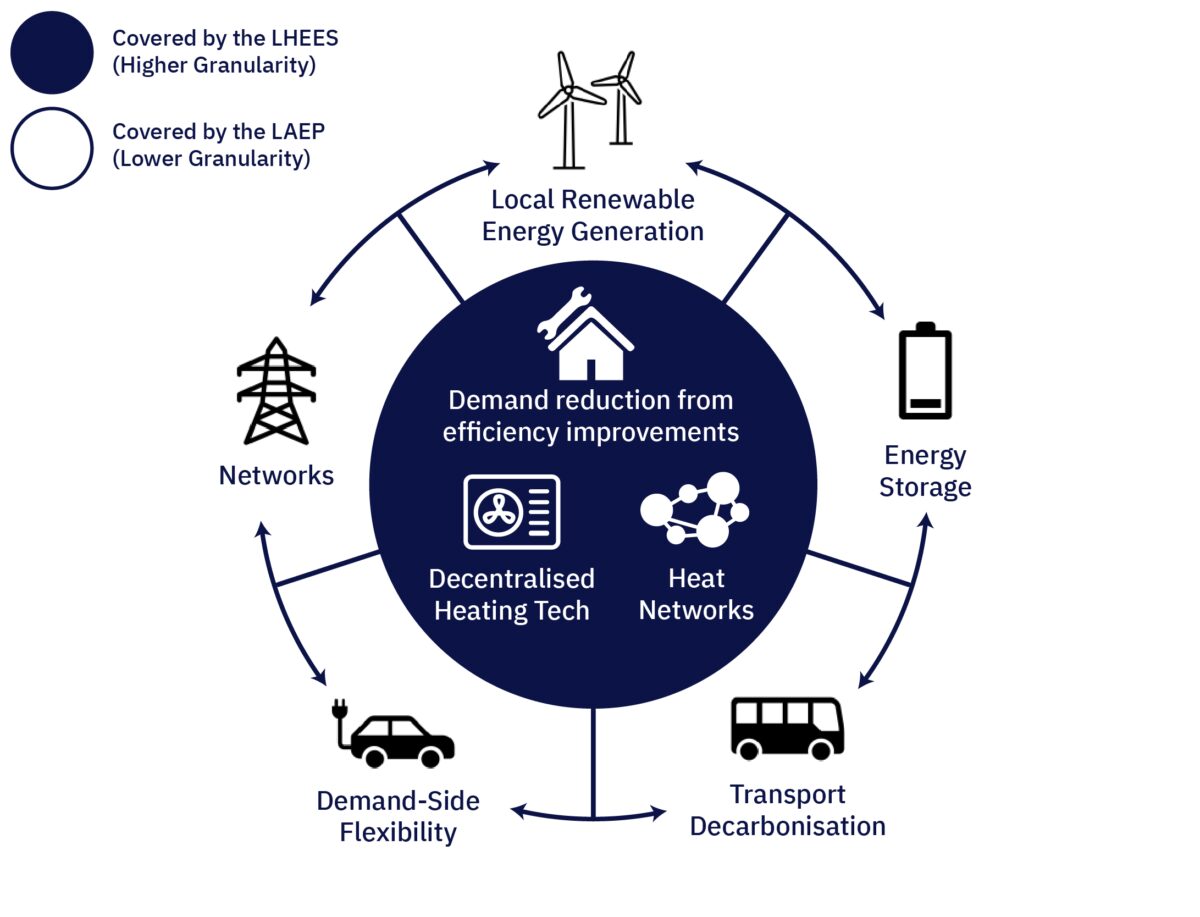
Our LHEES and LAEP Priorities
To make sure we can achieve our vision we will work towards five main priorities:
LHEES Strategic Priorities
- Improving buildings’ energy efficiency aiming for affordable warmth and regulatory compliance -
- Decarbonising heat within a transitioning energy system focusing on heat networks and heat pumps.
LAEP Strategic Priorities
- Reduce transport.
- Decarbonise Transport
- Deploy local renewable generation
Local Energy Net Zero Accelerator
The Council will publish our LHEES and LAEP evidence base through the LENZA platform. This will include data on building suitability for heat decarbonisation (heat pumps and heat networks), building fabric retrofit and wider energy system demand (e.g. Electric Vehicles) and generation considerations. LENZA will be used to plan and coordinate retrofit and roll out of low carbon technologies and will facilitate collaboration between network operators, local authorities and other energy transition stakeholders to achieve our strategic priorities and plan investment strategically.
Each year, we'll share an annual update on how we're progressing with the LHEES.
Preparing the LHEES
PKC commissioned consultants Arup to provide technical consultancy services to support in the preparation of the first iteration of LHEES Strategy & Delivery Plans and wider Local Area Energy Plan (LAEP). This work is supported by a number of project partners including SSEN, Energy Savings Trust and Advanced Infrastructure. The Draft PKC LHEES Strategy was adopted by Council on November 27,2023 and submitted for review by Scottish Government in December 2023.
This plan has been developed through active involvement with various stakeholders in the local energy system. These include Distribution Network Operators (DNOs), regional transport authorities, housing providers, public services, local energy charities, and neighboring local authorities. Engaging with stakeholders is crucial to secure support from diverse perspectives and foster collaboration as we progress towards a more localised and interconnected energy system to achieve our net zero targets.
If you have any questions or input you wish to provide about the LHEES or LAEP please email [email protected]
The Perth and Kinross LAEP (2024 - 2045) outlines a vision for a net-zero carbon energy system and recommendations for achieving our 2045 net zero targets. The vision for our future energy system is:
Perth and Kinross will become a model for affordable, equitable access to sustainable energy for all residents, businesses and organisations through an integrated, net-zero local energy system.
The LAEP provides an understanding of the nature, scale, rate, and timings of changes needed for the transition to a net zero energy system, taking a whole energy systems approach and considering the complex interdependencies of different energy vectors from generation through to demand.
This plan has been developed through active involvement with various stakeholders in the local energy system. These include Distribution Network Operators (DNOs), regional transport authorities, housing providers, public services, local energy charities, and neighboring local authorities. Engaging with stakeholders is crucial to secure support from diverse perspectives and foster collaboration as we progress towards a more localised and interconnected energy system to achieve our net zero targets.
Pathways to Net Zero Carbon
The Local Area Energy Report outlines four distinct pathways to net zero, only one of the pathways, high ambition, will reach net zero carbon emissions by 2045 illustrating the scale of the challenge ahead.
LAEP Priority Intervention Areas
The LAEP identifies priority intervention areas to achieve the objectives of the proposed future energy system and recommended pathway. Achieving the LAEP's objectives will require appropriate governance, engagement, policies, and financing solutions. The scale of changes modelled will involve interventions across heating, transport, electricity, and overall energy use. A coordinated effort across all facets of the energy system is vital for the net zero transition. While the core results and priority interventions identified in the LAEP are summarised at a regional level, the evidence base was developed at a more granular level facilitating additional analysis to inform strategic decisions and investment planning within Perth and Kinross.
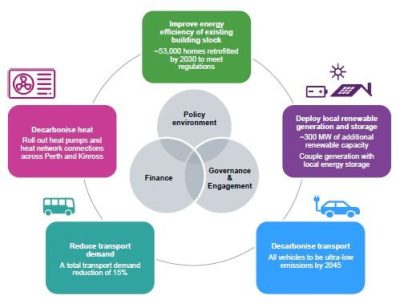
LHEES LAEP Shared Delivery Plan priorities to 2029/30 and short-term actions
The LHEES/LAEP Delivery Plan has been developed in partnership with key stakeholders and provides a strong basis for action for local communities, government, investors, developers and wider stakeholders, pinpointing areas for targeted intervention and early, low-regrets measures in the near to medium term.
The below routemap summarises key high level priorities for the next five years (2024 -2029) across our 5 Strategic Priorities. Short-term key action updates have been provided where we have identified plans or programmes currently delivering on these priorities. Key delivery partner logos indicate areas where we are working together to support delivery.
To support the LHEES/LAEP Delivery Plan the Council will undertake targeted engagement with specific stakeholders on an ongoing basis and continue to identify delivery programmes, funding and partners.
Due to the dynamic nature of this plan, and rapidly evolving regulatory, funding and policy landscapes, it is intended to be kept as a live document.
The full Delivery Plan will be reviewed regularly to ensure partners are able to respond flexibly to changes in need across Perth and Kinross particularly how actions would be funded.
Our delivery priorities across the 5 LHEES LAEP Strategic Priority areas are summarised below. Fully accessible versions available on request at [email protected]
Enabling Actions

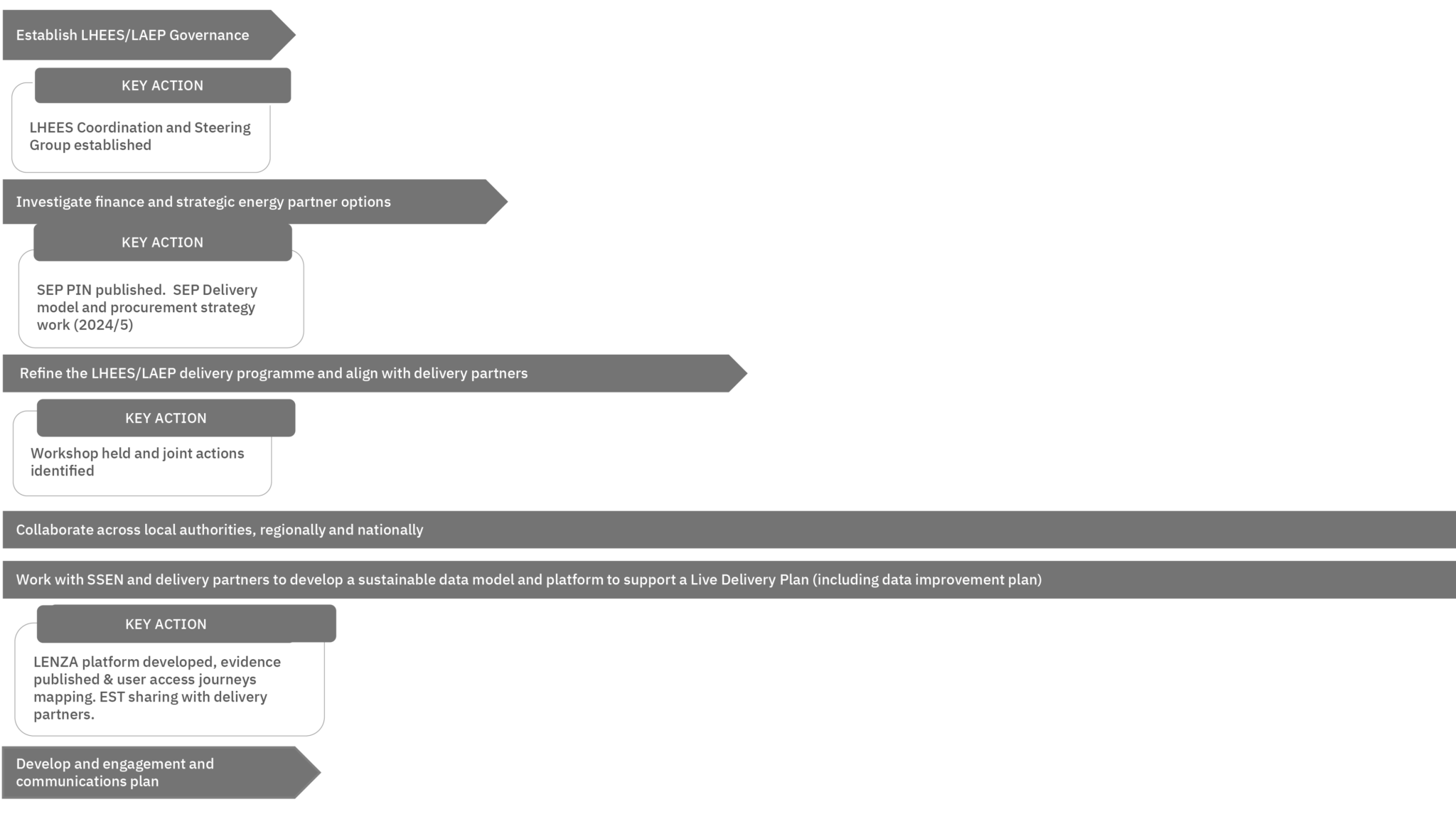
1. Energy Efficiency

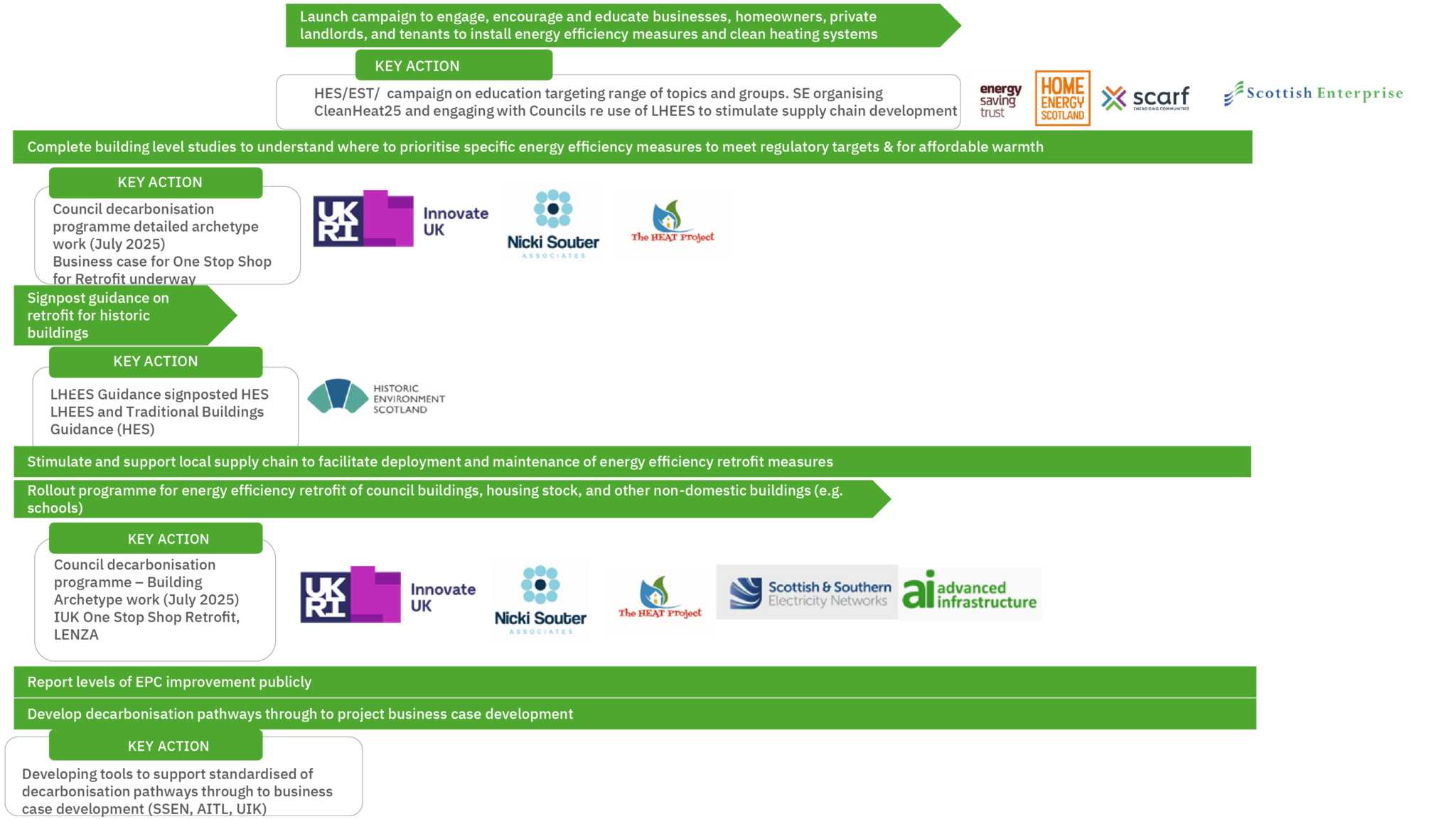
2. Decarbonise Heat

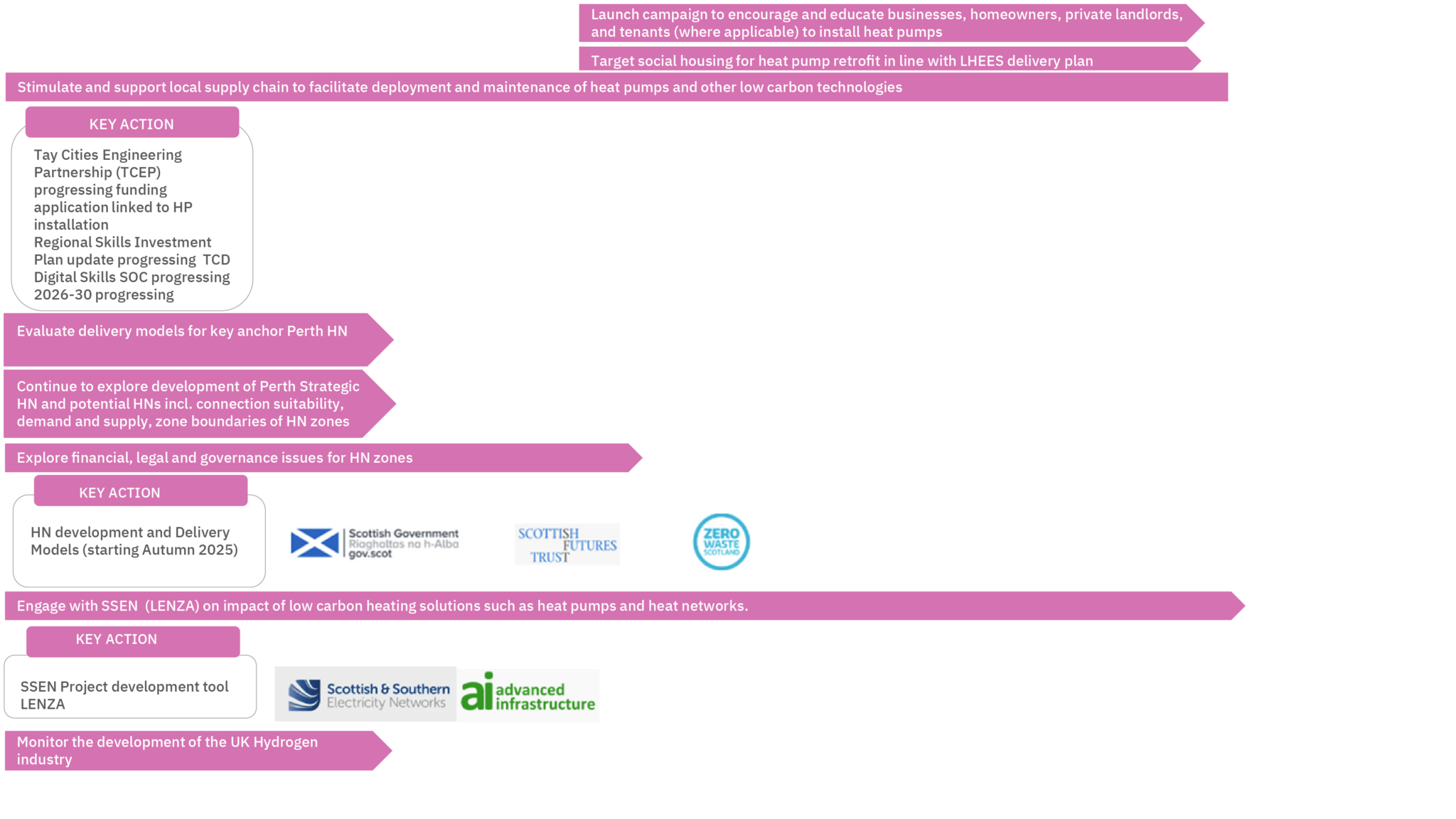
3. Decarbonise Transport and 4. Reduce transport demand

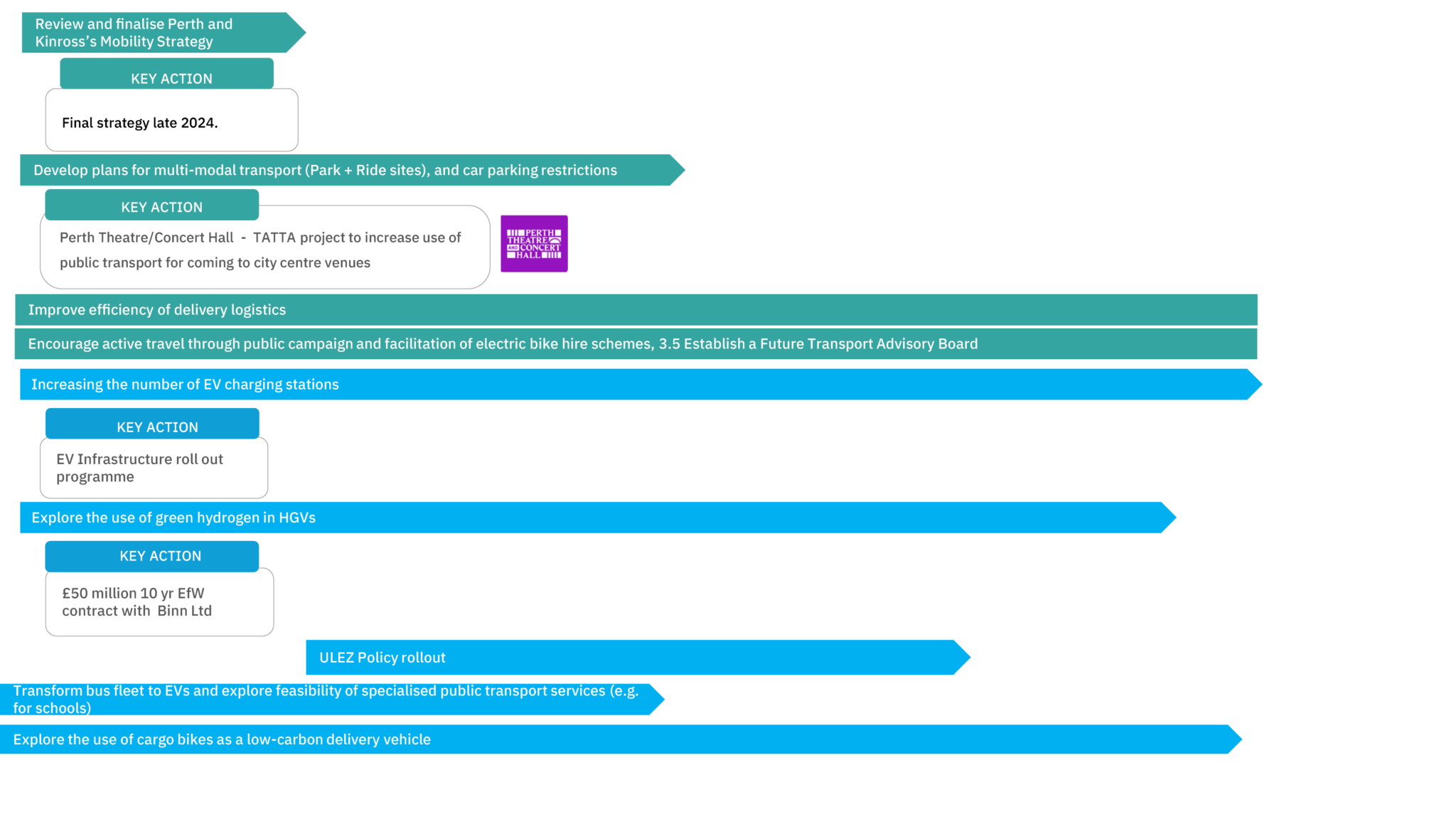
5. Deploy local renewable generation and storage

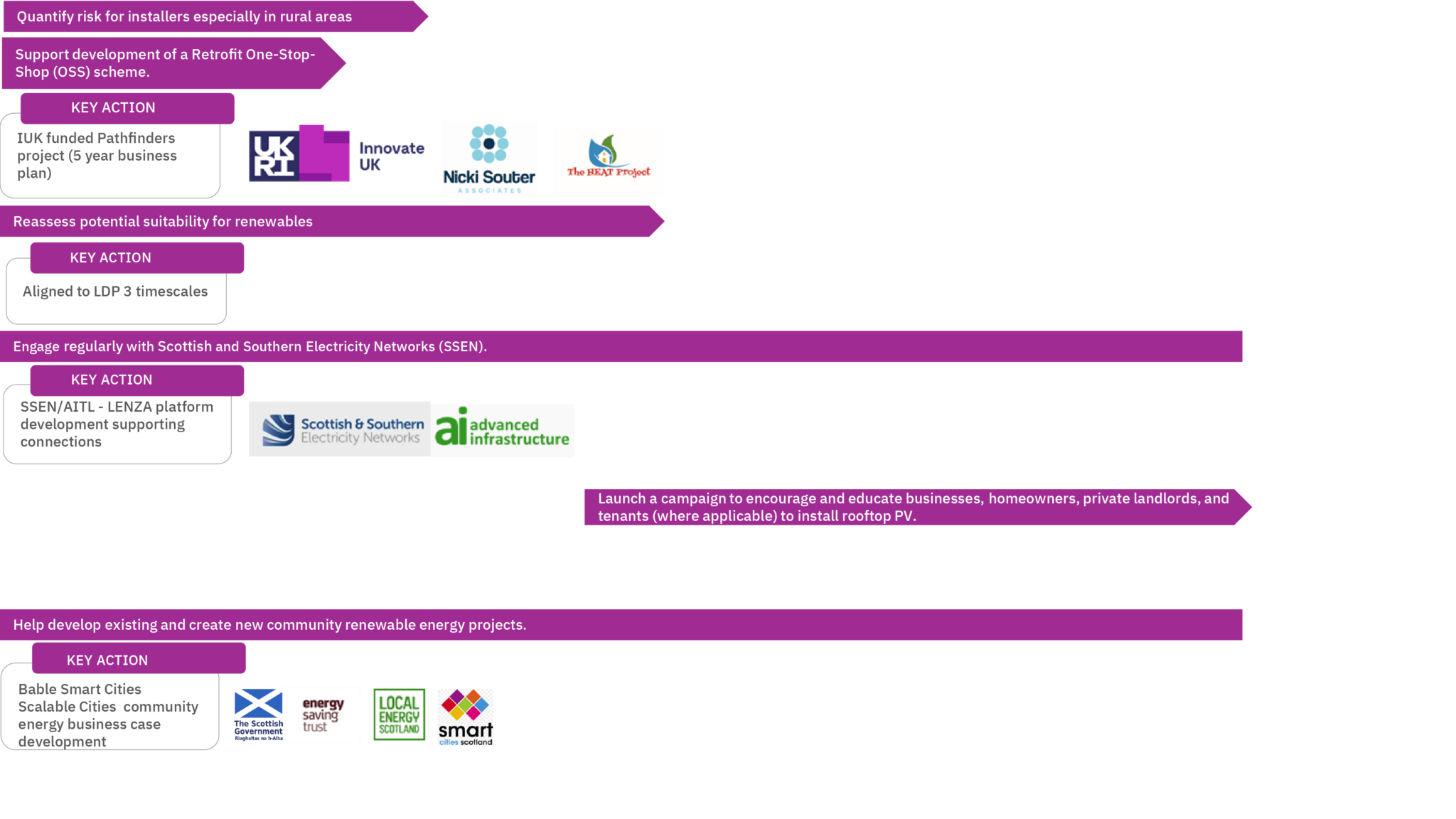
As part of the process we have to consult NatureScot, SEPA and Historic Environment Scotland on whether the plan, programme or strategy is likely to raise issues of significant environmental impact.
We sent our Screening Report to the consultation authorities to determine whether the Strategy & Delivery Plan is likely to have significant effects on the environment on the 9th June 2023. You can also view the responses from the consultation authorities:
Having consulted the three consultation authorities, and having considered the criteria set out in the Act, the Council considered that the LHEES Strategy and Delivery Plan are unlikely to have significant environmental effects and has therefore decided that SEA is not required. You can also view the Screening Determination for further detail.
The Perth and Kinross LHEES consultation is now closed. The consultation sought views on the draft vision, priorities and actions. These priorities and key actions were used to shape the first Perth and Kinross Local Heat and Energy Efficiency Strategy (LHEES) and accompanying 5 year Delivery Plan (2024 -2029) to be published in Spring 2024 alongside our Local Area Energy Plan (LAEP).
The Perth and Kinross LHEES is driven by Scotland’s overarching statutory targets for greenhouse gas emissions reduction and fuel poverty.

This Strategy was informed by developing a rigorous evidence base and through engagement with partners across Perth and Kinross and beyond. Ongoing collaboration, including sharing of knowledge, data, and innovations has been key to the development of Perth and Kinross’s LHEES and will be key to its successful delivery
The LHEES document is accompanied by web mapping for Potential Heat Network zones and Strategic Priorities .

